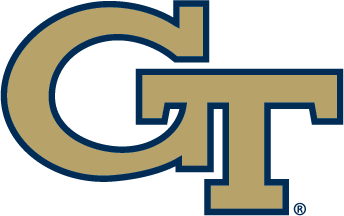Jan. 10, 2014
By Matt Winkeljohn
The Good Word
There were times not so long ago when Quinton Stephens struggled to see the light. Maybe he didn’t quite sulk about a shortage of playing time, but you weren’t going to find him happily bouncing around, either. He was in the dark.
So, the lone remaining healthy and roster-active Georgia Tech freshman basketball player sought counsel of a sort, which helped, and look at Stephens now: he’s in the mix!
“That’s what happened. I was able to talk to some of my coaches, especially coach [Chad] Dollar, and they were able to re-assure me,” he recalled. “Everyone’s path is different. Some players who have been great here started their freshmen year, some didn’t. Some came off the bench. Some were walk-ons.
“That helped me have a broader view of my role.”
Good thing, that, because Stephens’ role has suddenly become much broader.
Soon after something popped in the left knee of forward Robert Carter Jr. on Dec. 29 in Charlotte, the slender newcomer from the Marist School became that much more important to the Yellow Jackets.
He’s part of the three-player committee that is to backfill behind Carter, joining senior Kam Holsey and senior Jason Morris.
Holsey is the only natural. He’s a power forward by nature, although his game is more centric than that of Carter because of Robert’s extended shooting touch.
Morris has become Tech’s starting shooting guard in the wake of the shooting woes of Chris Bolden, and he also spells Marcus Georges-Hunt at small forward.
Stephens was spelling Georges-Hunt, although not a great deal.
In the Jackets’ first 12 games, he played 11 times for a total of 91 minutes. Twenty of those came in a blowout of Mississippi Valley State, 15 in a similar game against Presbyterian and 14 versus East Tennessee State. In the either other games in which he appeared, Stephens 42 minutes – all single-digit minutes.
In games against Charlotte, Maryland and Duke, however, he’s been deployed for 18, 19 and 22 minutes to pitch in 6.3 points and 4.3 rebounds per contest.
He hasn’t exactly come from nowhere, but Stephens’ path hasn’t been typical.
“He’s mature beyond his years,” Gregory said. “Many freshmen who aren’t logging a lot of playing time, they don’t make improvements during practice or see the value of practice. Q is completely different.
“[That is] very rare, exceptionally rare. A lot of freshmen, when they’re not getting a lot of minutes stagnate a little bit. They don’t necessarily feel sorry for themselves, but just don’t see – one of the biggest challenges for young guys is seeing the value of the daily process.”
Stephens is unique in a few ways.
Like Carter, he’s more a shooter than one might predict for a fellow who is 6-feet-8 ½, but where Carter has shoulders wide enough to land aircraft upon, Stephens might better be suited with a parrot on either side of his head.
He weighs about 184 pounds. Carter, who is listed as 6-8, weighs about 240.
So while Stephens is better suited to play the swing wing (small forward) spot, he’s being asked to do more, to big up – especially on defense.
Sometimes, that’s a problem, although it didn’t keep him from scoring 10 points and grabbing six rebounds at Maryland.
“Sometimes, the lack of physicality will come into play but never a lack of heart,” Gregory said. “He understands what we’re trying to get done. He’s always in position. Sometimes, there was a play or two [at Duke] where [Jabari] Parker was just stronger than him.
“But he ends up making some pretty good plays because of his length and his timing. I can live with it if the deficiencies come because of the physical.”
Stephens will get bigger, yet not overnight.
So, for now, he works differently.
“[At power forward] you have to wedge a lot more, use your body, box out. At the [small forward] you can kind of just hit, and go for the rebounds,” he said. “We have to modify some of our defenses when I play against a bigger opponent. We’ll trap some of them.
“The three is a lot quicker. I would say I have to work a little harder at the four [power forward] to get around those guys and make them work as well.”
The work is easier, if that’s the right word, on offense because Stephens’ agility affords him chances to shake bigger, slower defenders. In fact, when the Jackets deploy him or Morris at the “power” forward position, Gregory changes the offensive approach from a double post to a four-out-one-in attack.
“At [small forward], I probably handle the ball more. At four, I’m doing more of a pick-and-pop instead of coming off screens,” Stephens explained. “The only difference is coming from the outside in as opposed to starting the offense inside. I have to be more versatile. That’s what they’re asking of me.”
Get The Good Word in your e-mail box — it’s free! Just register here to get the latest features on Georgia Tech Athletics.
Also, make sure to follow Georgia Tech Athletics on Facebook and Twitter.









